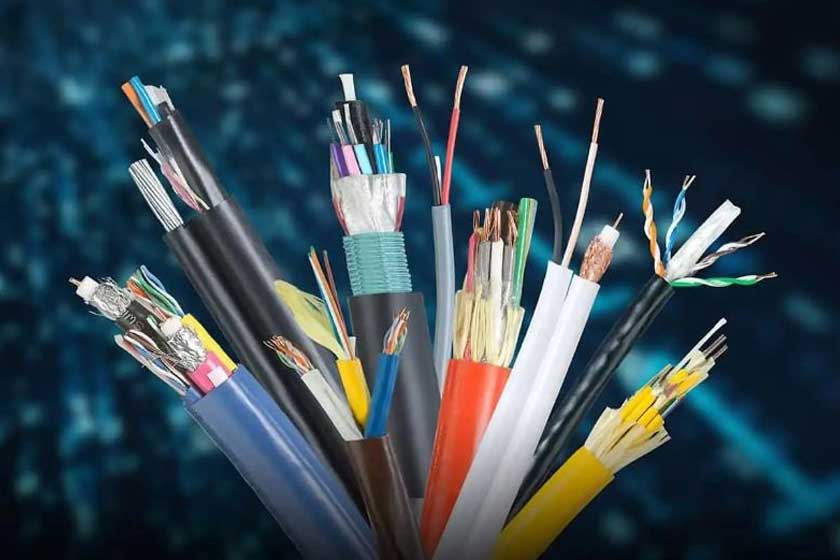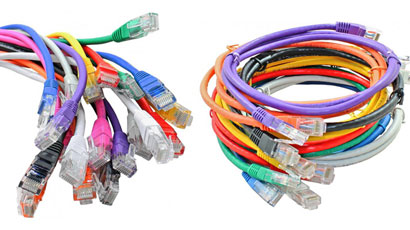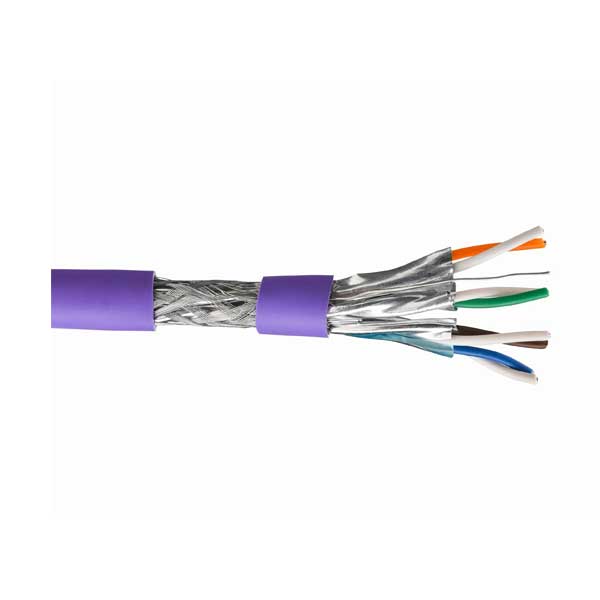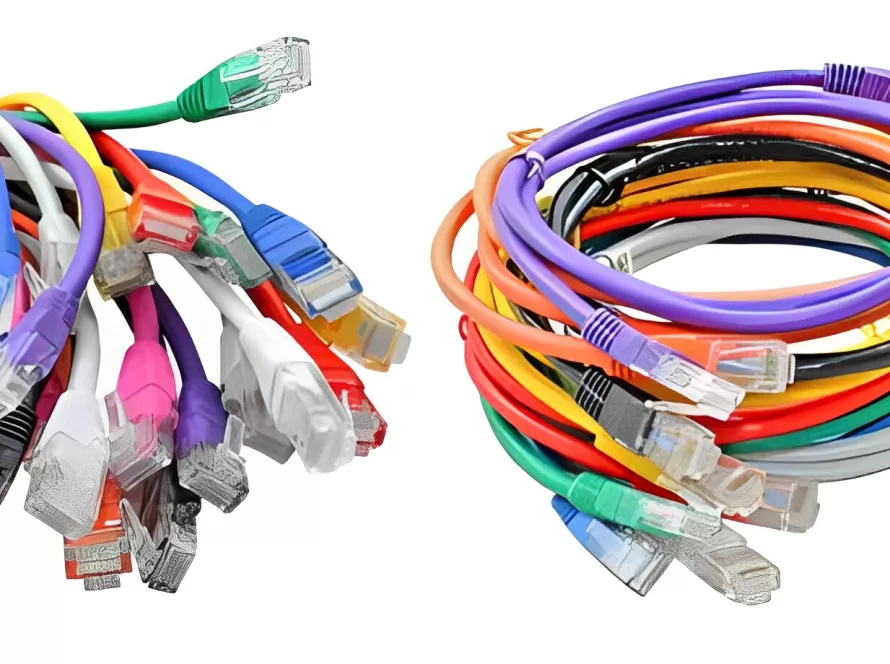Untangling: Communication Cables Vs. Wires

The digitally-driven world we have today means more cables, wires, routers, and a vast array of functional devices or systems imaginable. Though transmitting information and maintaining connectivity is easier than ever, it is important to understand the difference between communication cables and wires and their roles to provide a reliable interference that makes up our long distance communication with everyone. With this in mind, let’s take a look at the distinct differences that set communication cables and wires apart from each other in terms of usage, design, and functionality
What is a communication cable?
Communication cables refer to a bundle of wires or optical fibers that are protected and insulated. This type of cable allows the transmission of various types of signals like audio, video, data, and internet. They are also specially designed to carry electrical signals and voice communication from one point to another so we can have a flow of information across wide distances and connect to people. Basically, communication cables are engineered with specific characteristics to meet the demands of modern communication systems we have today.
These wires are like secret messengers that carry your messages, pictures, and videos at the speed of light. At their core, communication cables also consist of one or more conductors which are typically made of copper or fiber optic materials. These conductors act as pathways to transmit signals. In the instance that the cables are made of copper, they are insulated with materials like PVC or polyethylene to provide electrical insulation and protect against interference. But if the communication cable is made with fiber optic, it utilizes thin strands of glass or plastic to transmit data through pulses of light.

Key points to summarize the materials used for communication cables:
- Made with copper = Insulated with PVC or polyethylene for electrical insulation
- Made with fiber optic = Thin strands of glass or plastic for fast communication
What is a wire?
Wires are single conductive elements and believe it or not, they serve as the building blocks of communication cables. They are usually made of metal or alloy, which are excellent conductors of electricity. Wires are typically used for:
- Conductivity – Wires allow the flow of electrical current which makes them essential for electrical circuits.
- Electrical wiring – Electrical wiring is the most common use of wires because they are used to connect electrical devices, such as lights, appliances, and outlets to a power source. Thus, making sure that we have a home or a place with a safe and efficient distribution of electrical energy.
- Electrical components – There are many electrical components that need the utilization of wires like resistors, capacitors, transistors, and integrated circuits to create functional electronic devices.
- Mechanical support – On a big note, wires are also used for mechanical supports like suspension bridges, guy wires on antennas, and support cables in elevators. Technically, anything that you can think of regarding structural purposes, truly, wires can help.
- Industrial applications – Wires are used for industrial applications like welding (welding electrodes), heating elements (nichrome wire), and as components in machinery and equipment.
- Communication – Last but not least, wires like Ethernet cables are used for data transmission in communication systems.
In a nutshell, wires are necessary to keep the electrical current manageable and its equipment running smoothly.
Communication Cables Vs. Wires
There’s a big difference between communication cables and wires – especially for their uses. To start with, communication cables are specialized for data transmission and communication systems over longer distances, while wires are versatile conductive components used for electrical connections and power distribution in various applications. If you are choosing between which to use, it depends on the requirements of the task at hand. To delve deeper, here are 5 key aspects of communication cables and wires.
- Purpose: The purpose of communication cables is to transmit information over longer distances. They are known for being optimized and reliable to work with various communication systems like the Internet, telephone networks, and cable television.
On the other hand, wires have a broader range of applications. They are used for conducting electrical current which makes connections with electrical circuits and ultimately provides power to the devices in your home. - Composition: In terms of composition, communication cables are typically made of multiple insulated conductors that are bundled together within a protective sheath. The conductors inside the cable may be made of materials specifically for data transmission. Wires are usually single, solid conductors that may have insulation for electrical safety but they are not bundled together unlike communication cables.
- Conductivity: While communication cables may contain conductive materials like copper for power transmission (e.g., Power over Ethernet), their primary function is to transmit signals, not electrical power. Wires are specifically designed for carrying electrical current and are optimized for high conductivity.
- Application: The main examples of communication cables include Ethernet cables for networking, coaxial cables for cable television, and fiber-optic cables for high-speed internet. Whereas, wires are employed in various applications including electrical wiring in buildings, automotive wiring, industrial machinery, and electronics where they connect components and carry electrical power.
- Transmission Media: When talking about transmission media, communication cables use different ones depending on the type of cable and its intended use. On one hand, wires typically use solid or stranded copper conductors for electrical applications.
We can all agree that both communication cables and wires are important to the functioning of different communication systems and appliances that we have in our homes today. But, take note that communication cables duly offer additional advantages over individual wires. Why? Because the former has a protective covering for insulation which shields the wires from external interference and reduces signal loss. This insulation is also the reason why communication cables have enhanced overall durability and longer lifespan. Then again, you can’t use communication cables unless it serves their purpose. It’s better to do your due diligence to research which one to use so you don’t have to waste money or time in the long run.

Factors For choosing Communication Cables Or Wires
We don’t want to leave you empty-handed. Though we successfully differentiate the dissimilarity between communication cables and wires, there are still some key things to remember when choosing which to use between the two. First, the purpose and application. We established that communication cables vs. wires have different purposes and applications. So make sure that you know what you want to handle first between learning the capabilities of both.
Second, the level of protection and durability required. Communication cables are known for their robust construction, shielding capabilities, and resistance to external interferences like electromagnetic ones. Meaning, they are more a suitable choice for environments where protection against external factors is important. Of course, considering the price of both plays a significant role in the decision-making process. Due to additional components and technologies such as insulation, shielding, and specialized connectors a communication cable has, they’re generally more expensive than wires. If budget constraints are a concern, opting for wires may be a more cost-effective choice without compromising basic communication needs.
Installation and maintenance requirements should also be taken into account. Communication cables may require professional installation because they have a more complex structure and specialized connectors as compared to wires. The latter is relatively easier to install and maintain – making them a more convenient option for simple electrical projects or DIY ones. All in all, the decision between communication cables and wires should be based on a careful evaluation of the mentioned factors. It should also be related to your needs, budget, and long-term goals. Once done, it is guaranteed that you can buy a cable or wire that has optimal performance for your communication infrastructure.
Final Thoughts
Now that we are at the end of the article, it’s time to choose a brand that is committed to excellence. Otherwise, you are doing more harm than good to your communication system. Whether you are setting up a new communication network or upgrading an existing one, Tongda Cable offers a wide variety of options to meet your specific requirements.
Each communication cable available, from Ethernet to Coaxial cables, is meticulously designed and manufactured to deliver the reliability you’ve been longing for. Tongda communication cables’ takes pride in their state-of-the-art production facilities and cutting-edge technology – which keep up with the ever-evolving demands of the industry.
Whatever your project entails, Tongda Cable has the perfect solution to meet your needs.
Of course, the brand also takes pride in its customer-centric approach. With its most knowledgeable and experienced team, Tongda Cable is a brand that is always ready to assist you in selecting the right communication cables, answering any questions, and offering technical guidance. Upgrade your communication infrastructure with Tongda Cable and experience the difference in performance and reliability.



